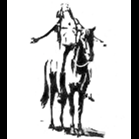May Thoo/may Han Aakaat
-
Recently Browsing 0 members
- No registered users viewing this page.
-
Topics
-
-
Popular Contributors
-
-
Latest posts...
-
177
Economy Trump's Tariff Troubles: Thai Academic Sounds Alarm on Key Issues
I guess you aren't talking to many Americans. I am not experiencing any hardship even though my income has dropped dramatically over the past year. Gas prices are down. Food prices have become lower. I just live a very middle class lifestyle. -
50
Crime Foreigner Buries Dog Alive in Shocking Phuket Incident
Will there be any attempt to search the premises for human victims. Usually the humans that are this cruel to animals have human victims too. There may be bodies buried in the ground or body parts hidden in refrigerator. -
2
Food distribution for Palestinians ‘like Hunger Games’, says Archbishop
Israel is the largest cumulative recipient of US foreign aid. US can do a lot more to influence Israel behavior. -
50
Crime Foreigner Buries Dog Alive in Shocking Phuket Incident
Seriously, Aseannow/Thaiger, why don't you delete these garbage statements as fast as AI generates them? -
4
Report Uzbek Man Arrested in Phuket for Assault and Theft
Throw the book at the <deleted> I’ll put them in jail as soon as he gets out the report his ass TIT -
56
The Expat Paradox: An Appraisal of Westerners in Thailand
How do YOU know how often folk shower in Manchester (Greater or the City of?) They get natural ones almost every day at certain times of the year.
-
-
Popular in The Pub


.thumb.jpeg.d2d19a66404642fd9ff62d6262fd153e.jpeg)







Recommended Posts
Create an account or sign in to comment
You need to be a member in order to leave a comment
Create an account
Sign up for a new account in our community. It's easy!
Register a new accountSign in
Already have an account? Sign in here.
Sign In Now